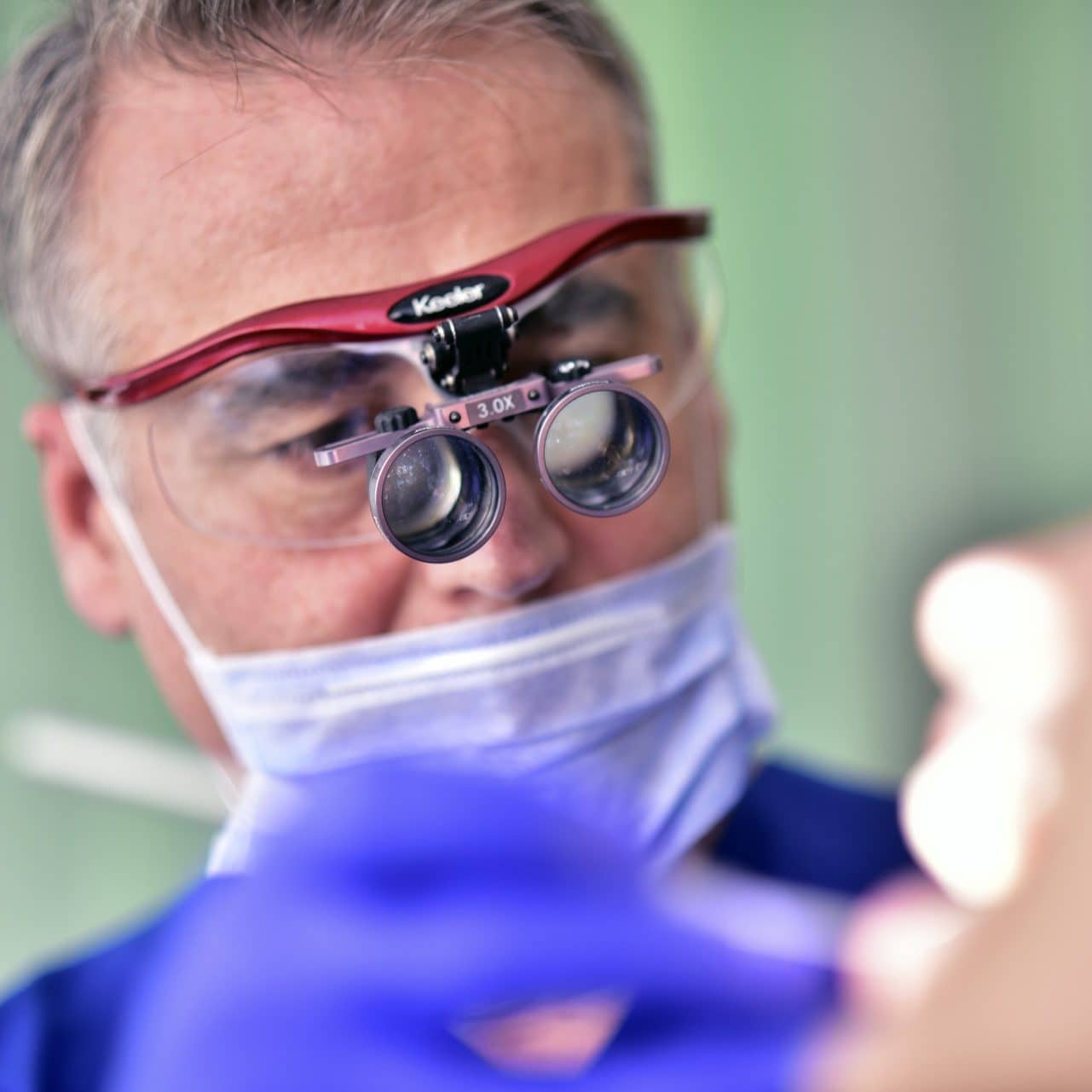

Periodontology
Periodontal disease, also commonly known as gum disease, is a set of inflammatory conditions affecting the supporting tissues around the teeth. In its early stage, called gingivitis, the gums become swollen, red, and may bleed. In its more serious form, called periodontitis, the gums can pull away from the tooth, bone can be lost, and the teeth may loosen or fall out. Bad breath may also occur. It is diagnosed by inspecting the gum tissue around the teeth both visually and with a special probe and X-rays looking for bone loss around the teeth.
What are the features of a healthy gum?
It has a light pink color, firm consistency and orange peel like texture to it due to stippling. In its more serious form, called periodontitis, the gums can pull back from the tooth exposing the root surfaces, bone can be lost, and the teeth may become loose or fall out. On the other hand, bleeding is a clear finding of gingivitis. Healthy gums should not bleed while brushing. Bleeding can be seen in simple gingivitis, as well as being an indicator of progressive gingivitis.
What are the factors that cause gingivitis?
Bacterial plaque is the primary cause of gingivitis. Saliva , food debris and colonized bacteria come together to form the bacterial plaque. In addition to tooth brushing , it is important to use the interdental cleaning products ( dental floss and interdental brushes) effectively to remove the bacterial plaque from the tooth surfaces properly.
Simple gingivitis begin when the bacterial plaque that accumulates at the edge of the gum cannot be removed regularly . This clinical picture, which is common in the society , may progress to deep tissues in some people and lead to dissolution in the supporting tissues of the tooth and eventually loss of teeth. Those who smoke, have diabetes and genetic predisposition are at a higher risk. It is important for the gum health to get checked periodically at 6-monthly intervals by the dentists, as it can progress without clinical symptoms such as pain and swelling being seen .
What is a dental calculus ? Why does it occur?
If the bacterial plaque can not be effectively and regularly cleaned on the tooth surface it becomes a dental calculus by being calsified with the minerals in saliva. It is necessary to visit your dentist to remove the dental calculus that have become a hard and rough layer (hardened, calcified bacteria).
Why is the dental calculus harmful?
Bacteria clinging to dental calculus can reach gums and deep tissues and cause gingivitis, gingival recession and loss of teeth in the end .
Does dental calculus cleaning ( scaling ) damage the teeth?
Dental calculus cleaning does not damage the tooth surface. On the contrary, after removing the hardened bacteria from the tooth surfaces, patients can perform oral hygiene practices more easily.
How Gingivitis is treated?
In the treatment of gingivitis, the first phase of treatment is oral hygiene education and cleaning of deposits on teeth surfaces. In case of gingivitis that has reached the deep tissues, “ curettage ” is performed in which the affected root surface and the gingival pocket are also treated . Local or systemic antimicrobials can be used to support mechanical treatment.
Depending on the supporting tissue loss and degradation pattern, surgical periodontal treatment can be performed combined with regenerative techniques (using bone graft and barrier membranes, etc. ).
Laser treatment can be applied in addition to mechanical treatment. It has been shown that the laser accelerate tissue healing and tissue reconstruction with it’s deep antimicrobial and biostimulation effect.
After completion of the active treatment phase, a supportive periodontal treatment program is started, which includes periodic controls of 3 months and 6 months . Throughout the treatment protocol, good oral hygiene practices and smoking habits are the main factors that determine the response to treatment.
Gingival enlargement and treatment:
Gingival enlargement can occur due to a variety of reasons such as chronic gingivitis; drug use
(anticonvulsant drugs, anti- hypertensive drugs and immunosuppressant drugs) and hormonal factors during pregnancy and puberty. Oral hygiene practices become difficult in these patients, chewing, speaking, teething is affected and there is an aesthetic problem. Treatment should be planned according to the patient since the causes of gingival enlargement are different.
What is Gingival Recession? Can it be treated?
Gingival recession can occur due to progression of gingivitis or mechanical factors. One of the first sign for gingival recession tends to be increased tooth sensitivity. The position of the teeth on the dental arc and the thickness of gum that are genetically thinner in some individuals (thin gingiva phenotype ) are the factors that affect gingival recession. Therefore, if the reason for the gingival recession is detected, it can be stopped early. Root surfaces exposed due to gingival recession can be closed by surgical methods.